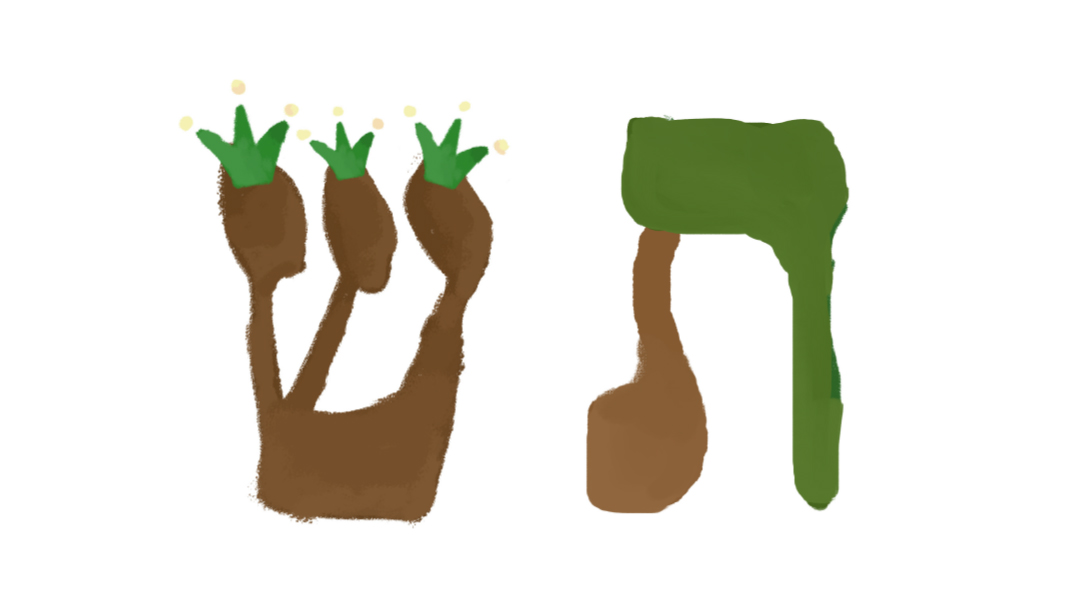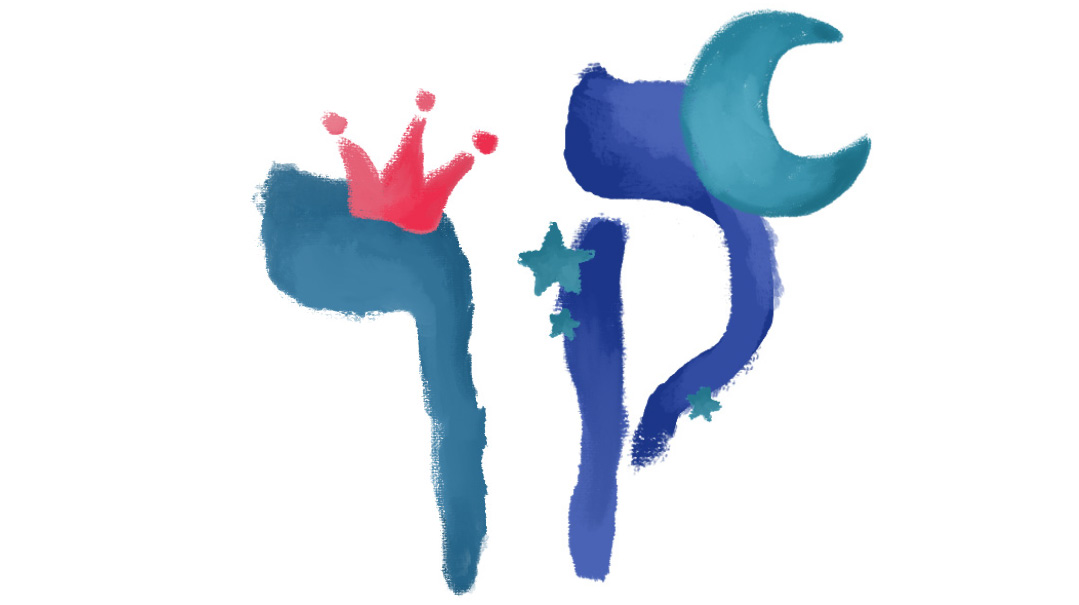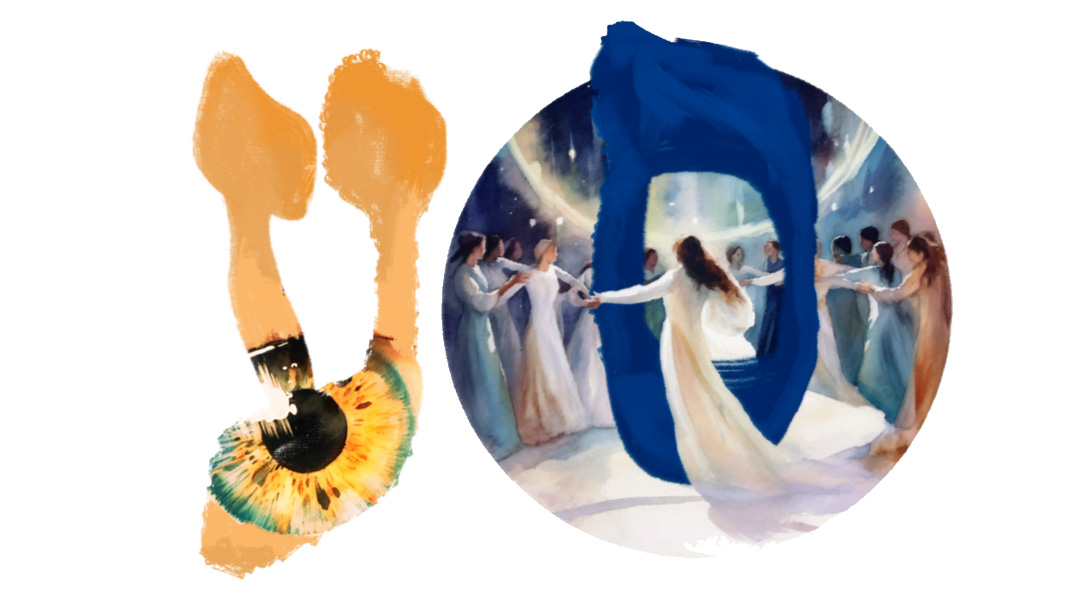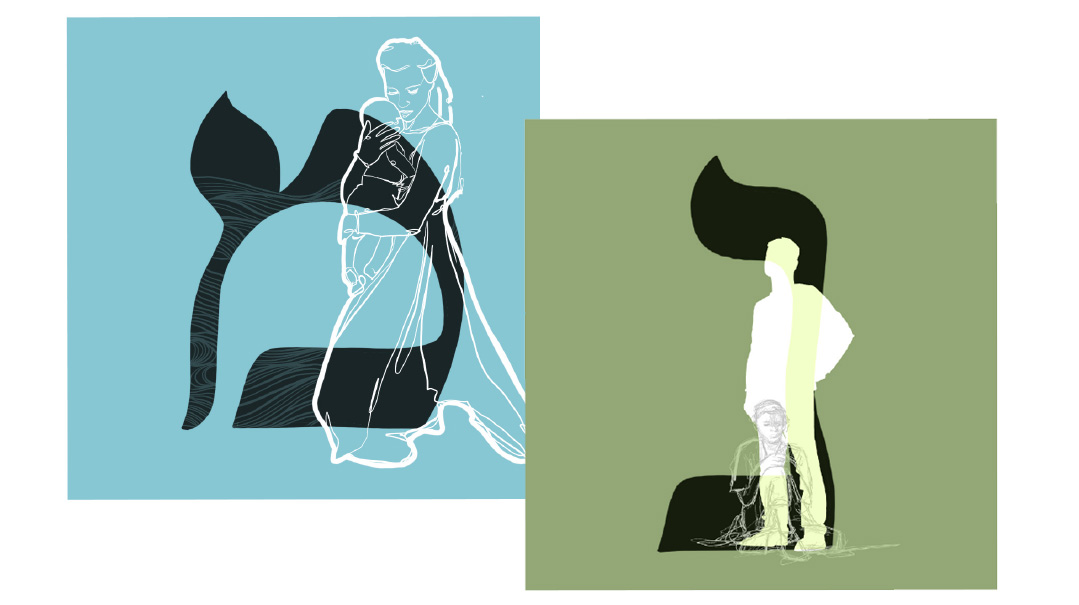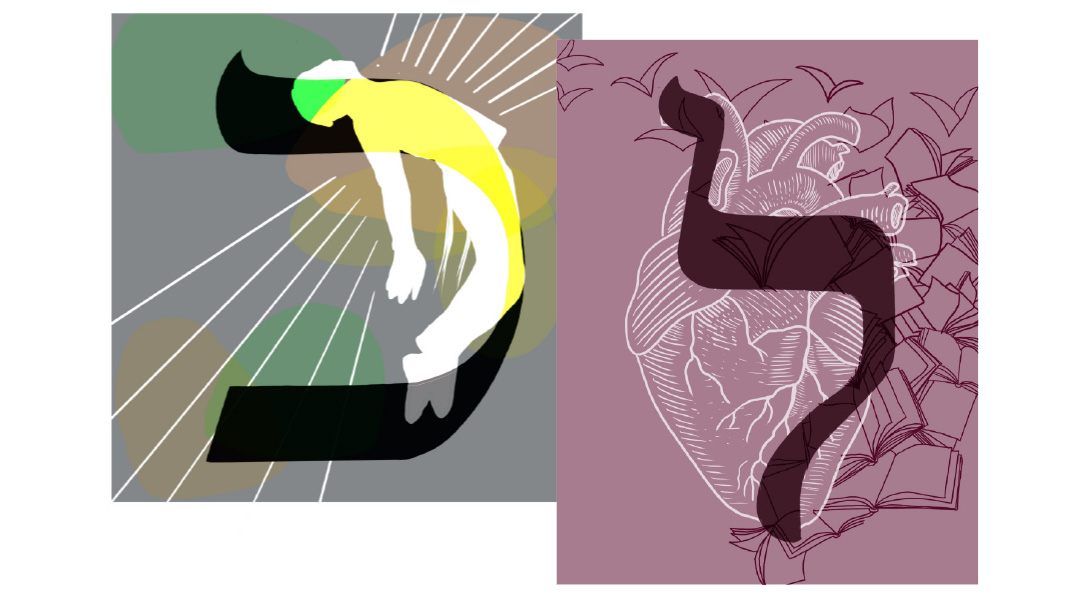Hei-Vav
| February 21, 2023Our mission is to turn thought and speech into something tangible
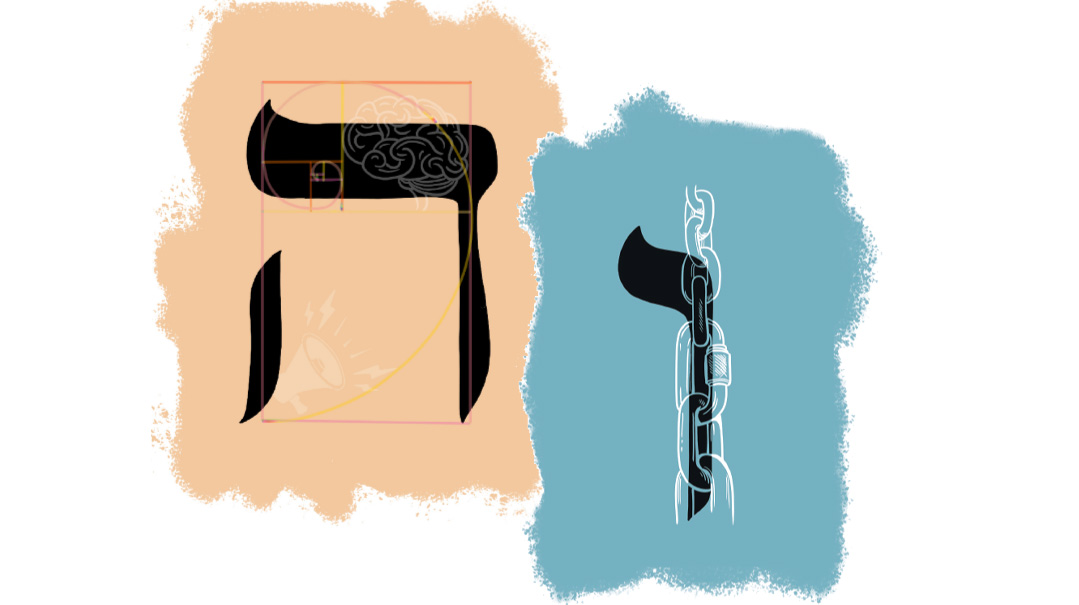
Hei
Name: Sounds like a breath
Gematria: 5
Shape: A daled plus a yud
Middah: Action
“ ‘Eileh toldos haShamayim v’ha’Aretz b’hibar’am, these are the accounts of the Heavens and Earth when they were created’ (Bereishis 2:4). B’hibar’am can be read as ‘b’hei bar’am — with a hei they were created’ ” (Bereishis Rabbah 12:10). This means that Hashem used aspects of the letter hei to create the world.
Kabbalistically, the horizontal and vertical lines of the hei represent thought and speech. The little yud represents action, which often gets disregarded, and our grand thoughts and words stay in the realm of the abstract. How many times a day do we say we are going to do something, or have an idea to accomplish a particular goal — but do nothing about it? Turning thought and speech into something tangible — that’s the goal of this world.
Five is the number of action. There are five fingers on each hand, which act guided by the five books of the Torah. Visually, the hei is made up of a daled and a yud, which spells yad (hand), with the daled representing the four main fingers, and the yud, the thumb.
Hashem added a hei to Avraham and Sarah’s names for their actions were going to produce a nation. Chavah, the very first woman and mother, was given her name (a derivative of Chayah) because she was the “eim kol chai, mother of all life.” The hei transforms the word’s meaning from “life” to “Chavah, giver of life” (Rashi on Bereishis 3:20).
Yosef tells the Mitzrim, “Hei lachem zera — here is seed for you [to plant]” (Bereishis 47:23). The hei represents the raw materials used to produce something greater. In Hebrew, a hei at the end of a word indicates the word is feminine. Woman has the ability, both physiologically and practically, to take a small seed of potential and actualize it into something much greater. A few ingredients can become a delicious meal, a child’s unrefined middos built and channeled toward their potential.
The hei is said with a soft breath, like the woman who gently guides those around her. Because when I yell and coerce others to act the way I want, the result isn’t theirs. When I send subtle messages of encouragement, their achievements are their own. Shlomo Hamelech tell us: “Divrei chachamim b’nachas nishma’im mi’za’akas mosheil ba’ksilim — the words of the wise are heard when said softly, more than the shouts of a king over fools” (Koheles 9:17). The voice of truth isn’t always heard, but when we listen, it resonates most deeply.
The Midrash (Bereishis Rabbah 12:10) continues, telling us that hei represents teshuvah. Life has a particular structure, represented by the box-like shape of hei. We can either choose to deal with what’s in our box, or we can ignore it. In choosing the latter, we fall out of the structure through the bottom of the hei and endure a meaningless existence. Alongside the ability to act and choose, Hashem offers us a path to correction. But you can’t go back through where you left — you must enter anew through the space toward the top left (Sefer Tomer Devorah, Ch. 1). When I see a particular method isn’t effective — for example, setting an alarm isn’t helping me to get out of bed — I can’t expect it to work the next time. Maybe I need more sleep to begin with. It’s up to me to find a new way to act.
Vav
Name: Means a hook
Shape: hook or tube
Number: 6
Middah: Connection
When a word in Hebrew is spelled with a vav in the middle as a vowel-holder, the word is called malei (complete). When a word relies on the vowel alone, it’s called chaseir (incomplete).
At the moment of Creation’s completion, we read, “Eileh toldos haShamayim.” Toldos (accounts) is spelled with two vavs, telling us that at that time, the world was perfectly whole. In contrast, throughout the rest of the Torah, we see this same word toldos spelled with just one vav or none. When the Navi later delineates the generations from Rus to David Hamelech, the progenitor of Mashiach, again toldos is spelled complete, showing us that all of life, from Creation until Mashiach, is a journey toward completion.
“Kedoshim tihiyu ki kadosh Ani Hashem” You shall be holy, because I, Hashem, am Holy (Vayikra 19:2). The first time kadosh (holy) is written here, it’s missing the vav, the second time, it’s malei. This shows us that while we strive toward holiness, only Hashem can be completely and perfectly holy.
The first time we see vav in Torah is in the sixth word of Bereishis 1:1 (v’es), and in that pasuk there are six alefs (the letter of bringing something into existence). In the same vein, the first word of the Torah, “Bereishis” is made of six letters. And finally, the world was created in six days — six being the number that takes a process from creation to completion.
The most common function of a vav is to indicate “and” — it connects one thing to the next. The vav’s shape resembles a person standing up straight — his feet on the ground and his head reaching to the Heavens. Alongside striving toward our own spiritual completion, we have a mission to help others become whole. Pirkei Avos (1:6) advises us, “Keneh lecha chaver, buy a friend for yourself.” When we make a purchase, there’s a reciprocal transaction, so too with a good friend, we’re both involved in the process of giving and receiving to complete one another.
The vav is also a pipe, which can supply or drain. Relationships can either uplift or put down the other person and we need to make sure we use them correctly.
Vav can also change the tense of a word; “Yedaber” means “he will speak” while “Vayedaber” means “He spoke.” With this opposition of tense comes an opposition of mood. “V’hayah” signifies a positive occurrence during something negative. “V’hayah ki yechtei v’ashem — it will be when a person sins and feels guilty” (Vayikra 5:23). While guilt is painful, when we know we did something wrong, we can do teshuvah. In contrast, the word “Vayehi” indicates a difficult time in the midst of a happy occurrence, such as “Vayehi bimei Achashveirosh” (Esther 1:1) — Achashveirosh’s party was the impetus for the persecution to follow.
The way we connect to an event determines if it will be positive or negative. If I make a simchah and focus on how the flower arrangements went wrong, my simchah turns sour. When I take a challenging circumstance and relate to it with an appreciation for the good, it can become a positive memory. So too with my life — the more I connect to Hashem in every situation, the more I work toward completion.
Connection of Hei to Vav
The “Hei of Creation” and the “Vav of Connection” work in unison to take a process from start to finish. A person’s raw potential needs to be nurtured, but it can’t end there — it must then connect back to its Creator and to those around it. When hei is added to a name, it indicates the power to produce. When vav is added, it signifies reaching the destination. It’s no wonder then that the Gemara (Shabbos 104a) tells us that hei-vav is a name of Hashem, a two-letter combination that when added to a word, hints to the presence of the Shechinah.
Mindel Kassorla is a teacher, graphic designer, shadchan, and Mishpacha contributor. Her older sister, Cindy Landesman, is the head mechaneches of Shearim Torah High School for girls in Phoenix, Arizona, and the director of its Shaarei Bina adult women's education program.
(Originally featured in Family First, Issue 832)
Oops! We could not locate your form.

